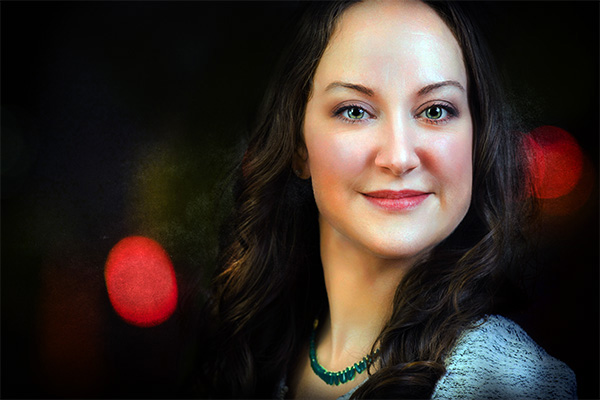Numerous Portraits Taken by Photographers in Studios Are Retouched Working with AI and Photoshop Applications
Numerous Portraits Taken by Photographers in Studios Are Retouched Working with AI and Photoshop Applications
Blog Article

In today’s electronic pictures landscape, portrait retouching happens to be an Practically predicted Element of studio photography. With advances in artificial intelligence (AI) and picture modifying software package like Adobe Photoshop, photographers can now remodel a raw impression into a polished last portrait in minutes. This transformation normally goes unnoticed by the standard viewer, yet it performs an important job in the presentation of private, Experienced, and professional identities.
Studio portraits, whether for professional headshots, family shots, or glamour photographs, are hardly ever printed or delivered of their first type. Most photographers consist of retouching of their common packages, understanding that purchasers assume a certain standard of refinement. From smoothing skin and eradicating blemishes to modifying lights and improving facial options, present day tools driven by AI and Photoshop have revolutionized the retouching process.
The Rise of AI in Retouching
Artificial intelligence has emerged as a strong ally to photographers recently. Tools like Adobe Photoshop’s Neural Filters, Luminar AI, and Retouch4me utilize equipment Studying algorithms to detect and boost facial functions immediately. These equipment can acknowledge eyes, mouths, pores and skin tones, and in many cases emotional expressions, allowing for remarkably focused edits that when essential hours of guide effort.
One example is, AI can now easy pores and skin whilst preserving purely natural texture, brighten eyes, whiten teeth, and perhaps subtly reshape facial functions to fulfill aesthetic preferences. These equipment You should not just use a just one-size-matches-all filter—they assess the person’s one of a kind facial composition and use improvements appropriately. This allows for a more sensible and individualized final result.
Furthermore, AI-driven batch processing allows photographers to retouch many images rapidly, making certain consistency and good quality throughout overall Image classes. What at the time took a talented retoucher quite a few several hours can now be attained inside of a portion of some time, with negligible handbook intervention.
Photoshop’s Enduring Purpose
Regardless of the rise of AI, Adobe Photoshop remains a staple in portrait retouching. Whilst AI resources provide speed and automation, Photoshop features great website Command and customization that seasoned photographers and editors rely upon. With levels, masks, and brushes, Photoshop allows for intricate edits that can be personalized to every topic’s requirements.
High-close retouching generally includes a mixture of automatic and manual procedures. For illustration, frequency separation—accustomed to separate texture from shade for more exact editing—demands a deep knowledge of more info Photoshop’s applications. get more info Dodge and burn up techniques, which support sculpt light and shadows to provide the face far more dimension, can also be normally utilized to reinforce a subject’s normal elegance with no creating a synthetic glance.
In some cases, retouchers could even composite features from numerous images—changing eyes from the blink-free shot or modifying apparel folds from a far better-posed body. These procedures need skill plus a thorough eye, which AI hasn’t nonetheless fully replaced.
Ethics and Expectations
As with all technologies that alters physical appearance, the increasing utilization of AI and Photoshop in portraiture has sparked conversations close to authenticity and ethics. Even though most studio retouching aims to current subjects in the best possible light-weight, it may elevate unrealistic magnificence benchmarks, particularly when edits are extreme.
Clientele are frequently unaware from the extent to which their pictures are modified. A refined skin softening could be appreciated, but dramatic alterations to system form, facial structure, or pores and skin tone can develop pain or misrepresentation. Due to this, quite a few photographers are beginning to give transparency regarding their retouching procedure, plus some even give clientele a choice involving lightly edited and thoroughly retouched versions.
There may be also a expanding craze toward all-natural retouching—boosting instead of altering. This tactic celebrates the topic’s actual options, getting rid of interruptions like stray hairs or non permanent blemishes whilst preserving the individual’s character and authenticity.
The way forward for Portrait Retouching
As AI proceeds to evolve, it’s possible that portrait retouching will develop into even more intuitive and accessible. Some smartphone cameras previously combine essential AI retouching attributes, blurring the line amongst Qualified images and day to day selfies.
In professional studios, the objective will continue to be to generate illustrations or photos that flatter purchasers though protecting a natural and plausible glimpse. AI instruments will continue on to help with effectiveness and accuracy, whilst Photoshop will offer the precision and artistry that only human judgment can fully harness.
Ultimately, using AI and Photoshop in portrait retouching displays a stability between technology and artistry. When made use of thoughtfully, these instruments support photographers deliver stunning illustrations or photos that empower consumers, preserve Reminiscences, and present people today at their best possible—without having getting rid of what can make them uniquely themselves.